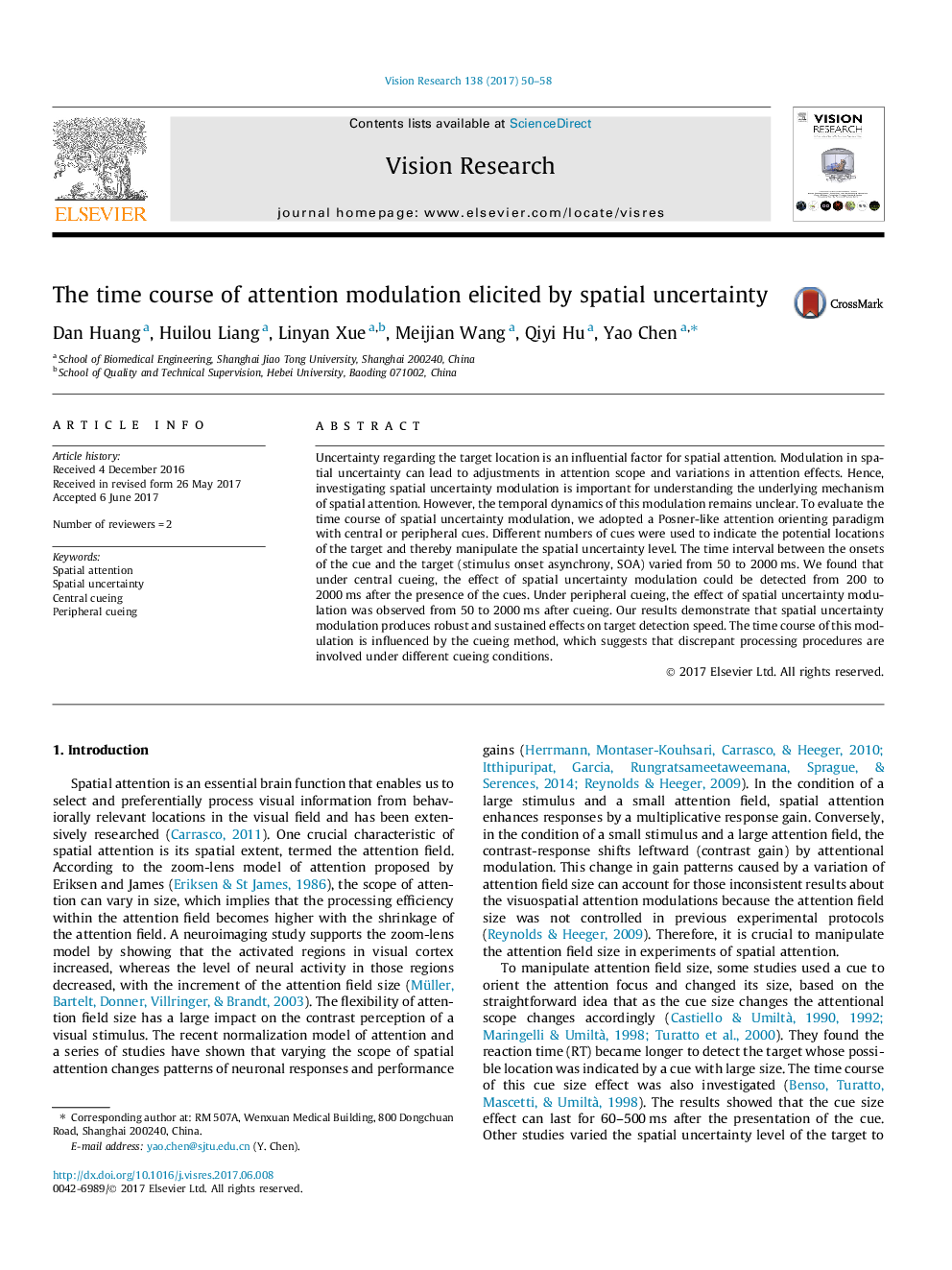| Article ID | Journal | Published Year | Pages | File Type |
|---|---|---|---|---|
| 5705845 | Vision Research | 2017 | 9 Pages |
Abstract
Uncertainty regarding the target location is an influential factor for spatial attention. Modulation in spatial uncertainty can lead to adjustments in attention scope and variations in attention effects. Hence, investigating spatial uncertainty modulation is important for understanding the underlying mechanism of spatial attention. However, the temporal dynamics of this modulation remains unclear. To evaluate the time course of spatial uncertainty modulation, we adopted a Posner-like attention orienting paradigm with central or peripheral cues. Different numbers of cues were used to indicate the potential locations of the target and thereby manipulate the spatial uncertainty level. The time interval between the onsets of the cue and the target (stimulus onset asynchrony, SOA) varied from 50 to 2000Â ms. We found that under central cueing, the effect of spatial uncertainty modulation could be detected from 200 to 2000Â ms after the presence of the cues. Under peripheral cueing, the effect of spatial uncertainty modulation was observed from 50 to 2000Â ms after cueing. Our results demonstrate that spatial uncertainty modulation produces robust and sustained effects on target detection speed. The time course of this modulation is influenced by the cueing method, which suggests that discrepant processing procedures are involved under different cueing conditions.
Keywords
Related Topics
Life Sciences
Neuroscience
Sensory Systems
Authors
Dan Huang, Huilou Liang, Linyan Xue, Meijian Wang, Qiyi Hu, Yao Chen,
